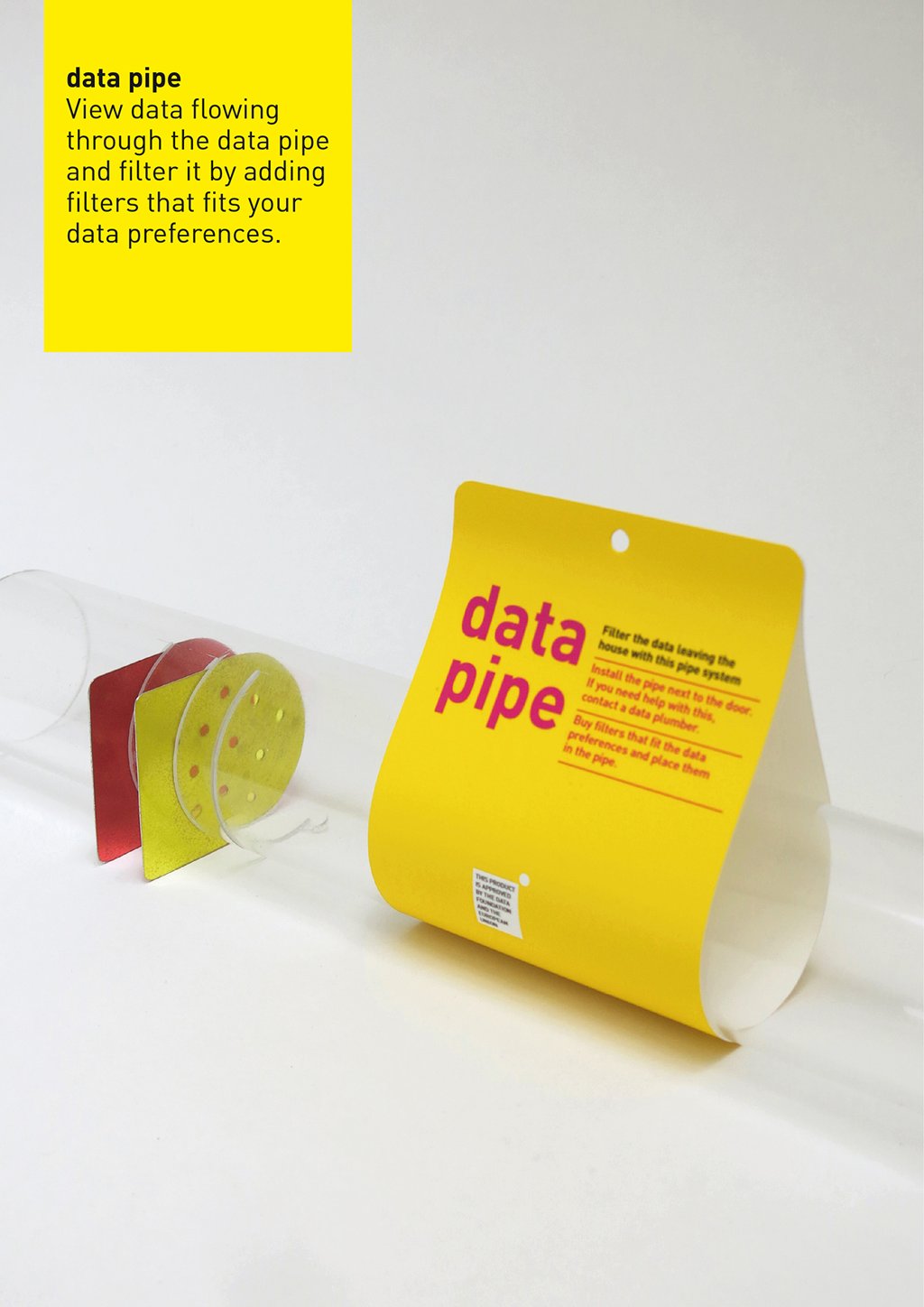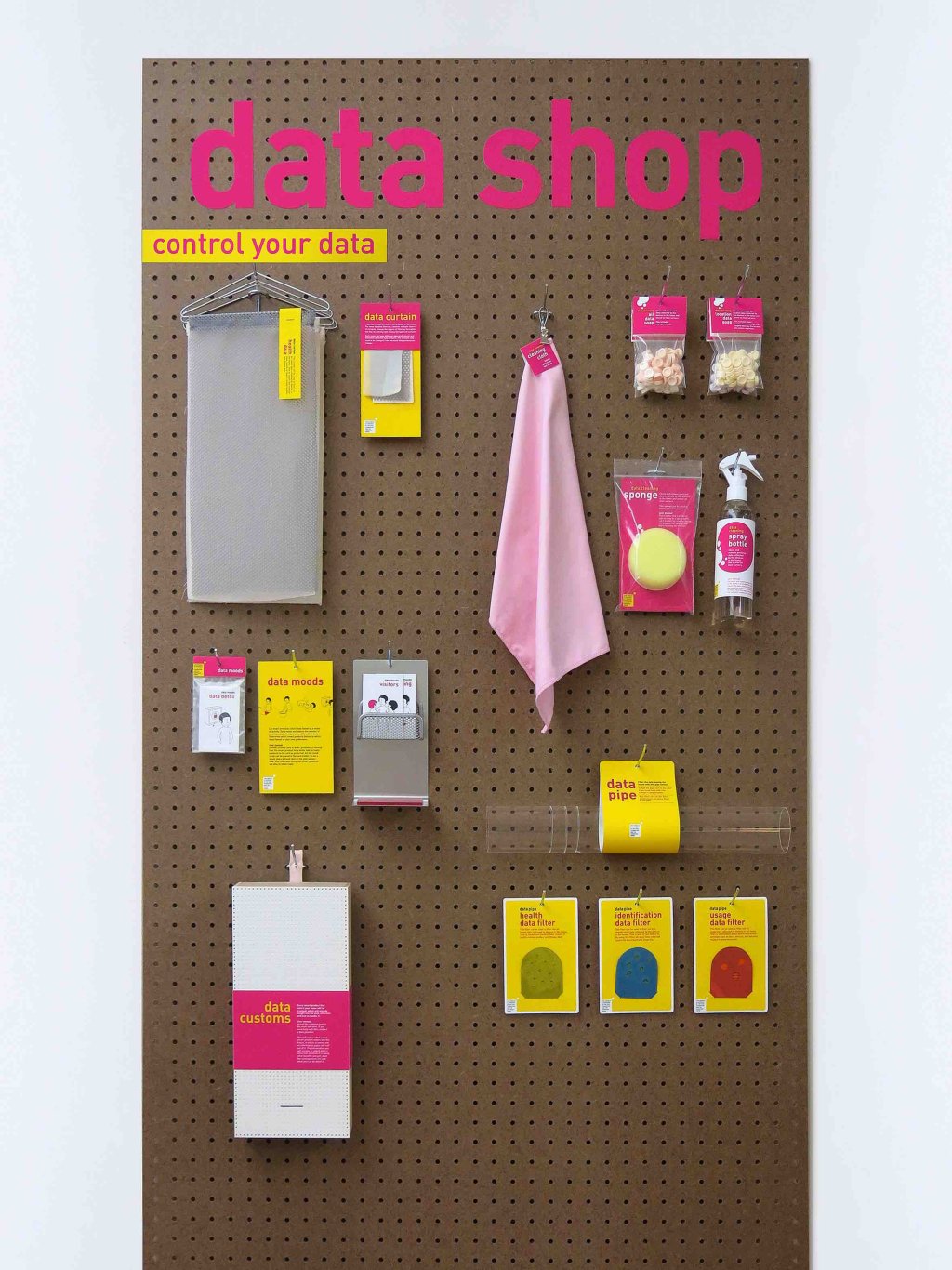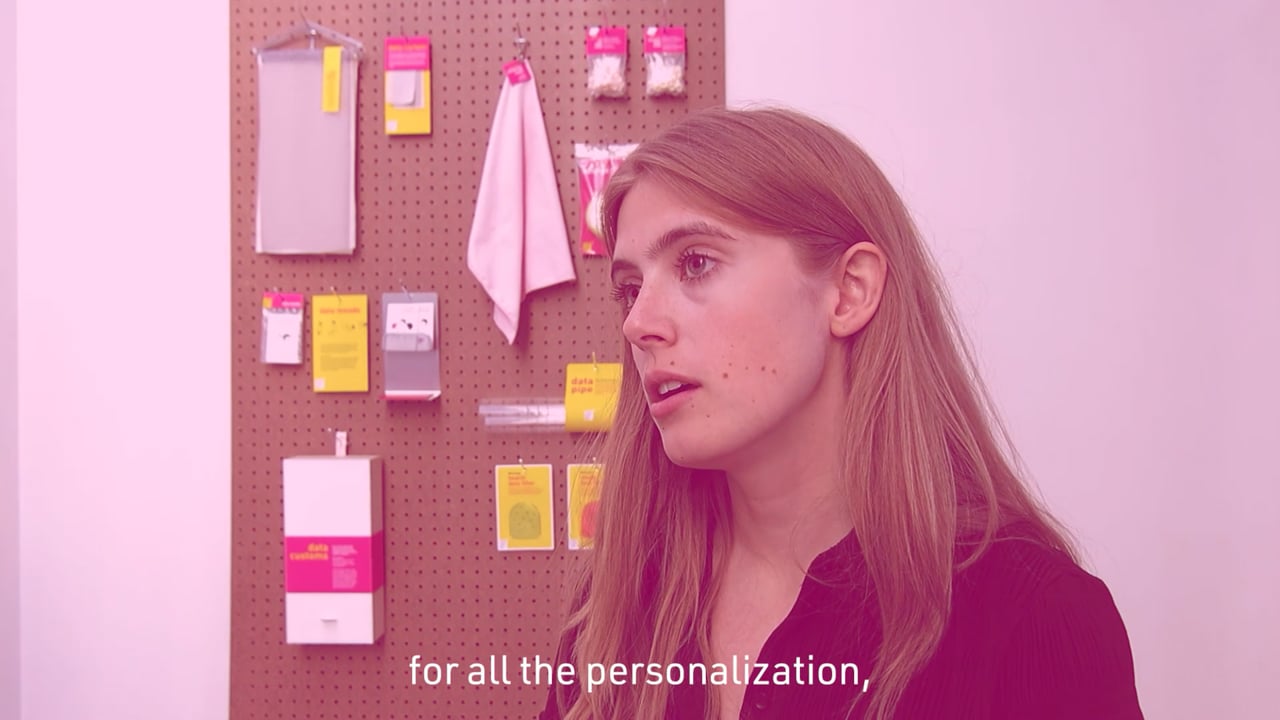Data plays an increasingly important role in physical and digital products, and because of this, users can enjoy increasingly personalized experiences. This often happens seamlessly, leaving the user with no conscious control over his or her privacy. Technology is also making itself felt in home situations, as more intelligent products become available to personalize the home. Tech companies collect data from these systems, unnoticed. What data is gathered, who receives it, and is this done securely, is not always clear. I believe that a home should be a place where you feel secure about your data - somewhere you can be safe and free and do what you want. This project is a first step towards giving control back to the user.
Data collection has not yet been studied in depth, however issues with this are becoming increasingly common in the media. Therefore, in this Data Door, data are considered from different perspectives: data and technological facts; needs of users and society; creativity, and metaphors for solutions close to people and business including Service Design, Trend Forecasting and Backcasting.
As data are abstract, the metaphorical design approach became the most important factor in the design process. It started with the metaphor of a door through which data leaves the house; the resident has then to decide whether this door is open or closed. In this way, data are no longer complex, but tangible -the core value of the project.
Finally, Data Door became five speculative products. Everyday products were given a new function, focused on controlling and setting personal data preferences. I imagine a future where we go to a data shop, buy data control products, and call a data plumber to resolve our data problems. This will enable us to take back control.
Data Door gives us future directions on the topic of data. It challenges technology to be an answer to human needs. By making a complex topic tangible, Data Door opens the conversation between stakeholders to look together at a future and share common values and norms.
Technology is advancing extremely rapidly, often providing society with important benefits. However, it is important that we as designers keep a critical eye and ask questions about themes like ethics and security. Systems should work for the user and not secretly against them. Together with EU regulations, designers can create a market that is transparent and better aligned with human needs.



